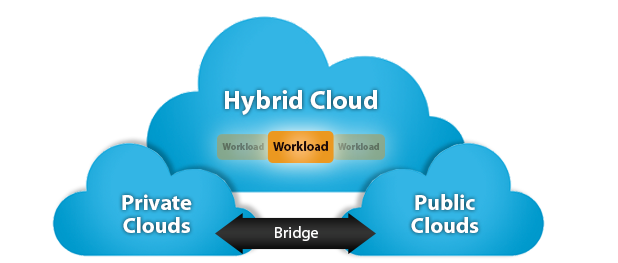The rapid evolution of cloud computing has transformed how enterprises manage their IT infrastructure. Hybrid cloud in enterprise IT is emerging as a key strategy for businesses seeking flexibility, scalability, and cost-efficiency. By combining public and private cloud environments, organizations can optimize workloads, enhance security, and achieve better performance.
In this blog, we’ll explore the future of hybrid cloud, its benefits, key trends, and best practices for implementation.
1. What is Hybrid Cloud in Enterprise IT?
A hybrid cloud combines private and public cloud environments, allowing enterprises to manage sensitive data securely while leveraging scalable public cloud resources for high-demand workloads.

This approach provides a balance between control, compliance, and cost-effectiveness.
Key benefits include:
-
Scalability for unpredictable workloads
-
Enhanced data security and compliance
-
Reduced IT costs and improved resource utilization
-
Seamless integration with existing on-premise systems
2. Why Hybrid Cloud is the Future
Enterprises face increasing pressure to innovate while managing costs and regulatory requirements. Hybrid cloud addresses these challenges by offering:
-
Flexibility: Easily shift workloads between private and public clouds
-
Resilience: Reduce downtime with disaster recovery and load balancing
-
Efficiency: Optimize resource allocation and reduce IT overhead
-
Agility: Quickly deploy new applications or services
As businesses continue digital transformation, hybrid cloud adoption is expected to rise across industries including finance, healthcare, and e-commerce.
3. Key Trends in Hybrid Cloud Adoption
-
AI and Machine Learning Integration: Hybrid cloud environments are increasingly supporting AI-driven workloads.
-
Edge Computing: Moving processing closer to users for low-latency applications.
-
Enhanced Security: Advanced encryption and compliance tools for sensitive enterprise data.
-
Multi-Cloud Management Platforms: Tools to manage workloads across multiple cloud providers efficiently.
4. Best Practices for Implementing Hybrid Cloud
-
Assess Workloads: Identify which applications should remain on-premises versus public cloud.
-
Prioritize Security: Implement encryption, identity management, and access controls.
-
Automate Management: Use cloud management platforms for monitoring, scaling, and cost optimization.
-
Plan for Compliance: Ensure the hybrid cloud strategy meets industry regulations like GDPR, HIPAA, and PCI-DSS.
5. Challenges to Consider
While hybrid cloud offers many benefits, enterprises must address:
-
Integration complexity with legacy systems
-
Skilled workforce requirements for cloud management
-
Cost management across multiple environments
With the right strategy and tools, these challenges can be effectively mitigated.
Conclusion
The future of hybrid cloud in enterprise IT is bright, offering businesses flexibility, scalability, and robust security. By understanding key trends, adopting best practices, and proactively addressing challenges, enterprises can leverage hybrid cloud to drive innovation and maintain a competitive edge.
Embrace hybrid cloud today to future-proof your IT infrastructure and enable seamless digital transformation.



